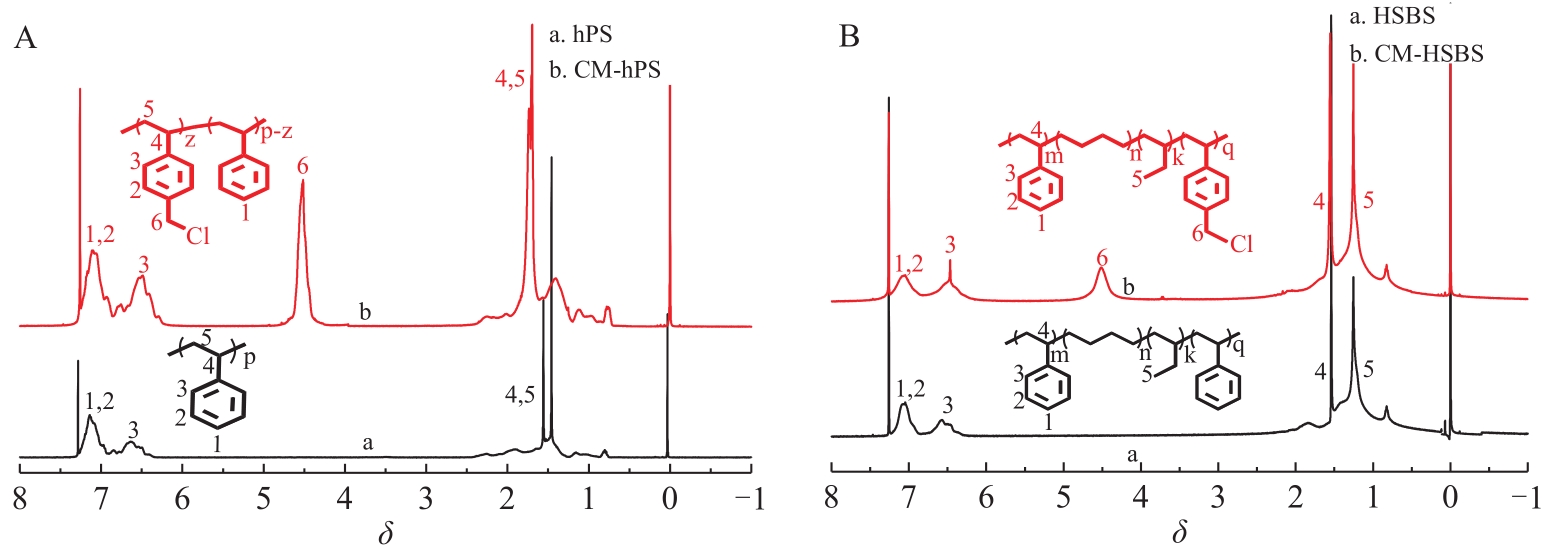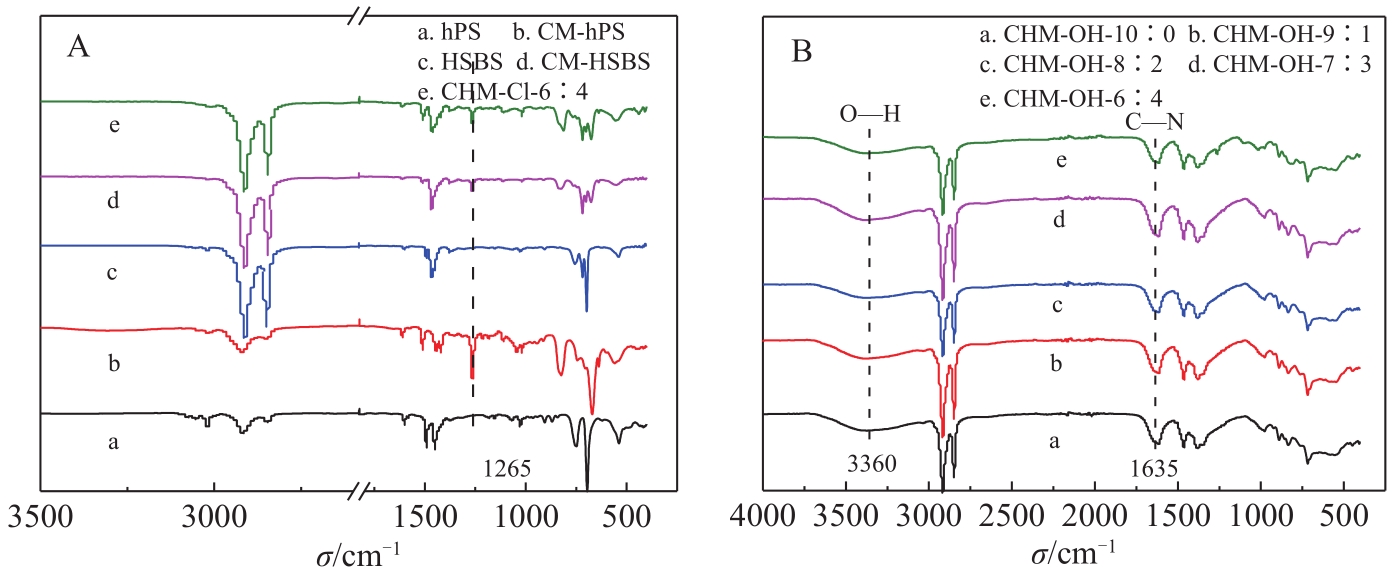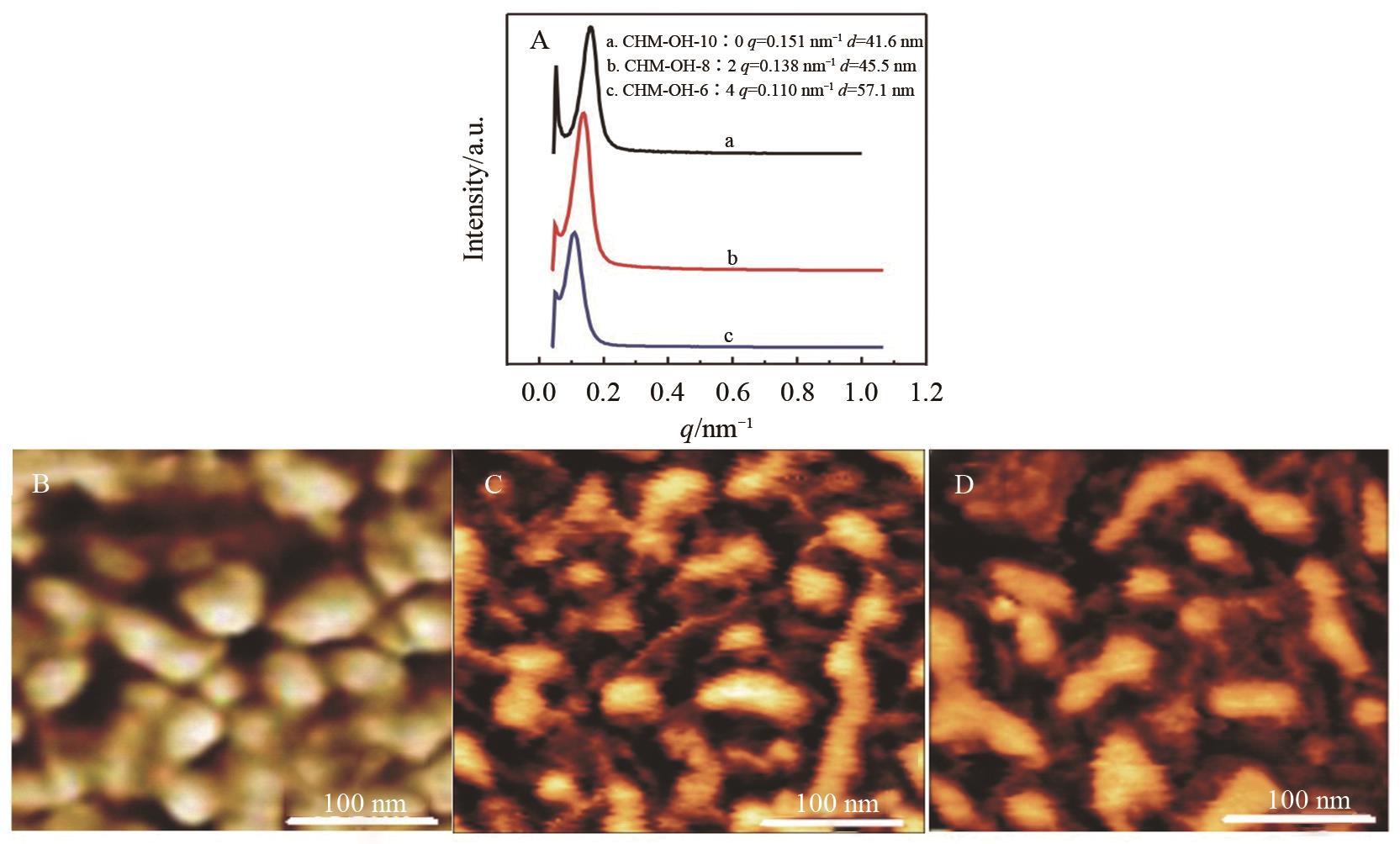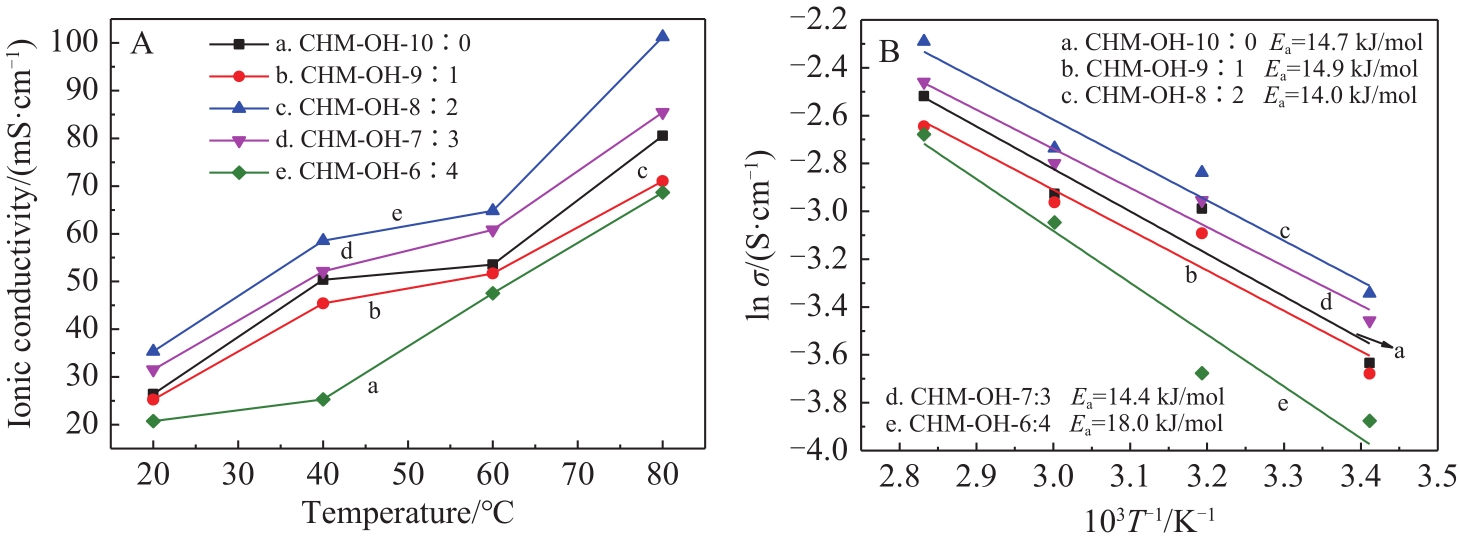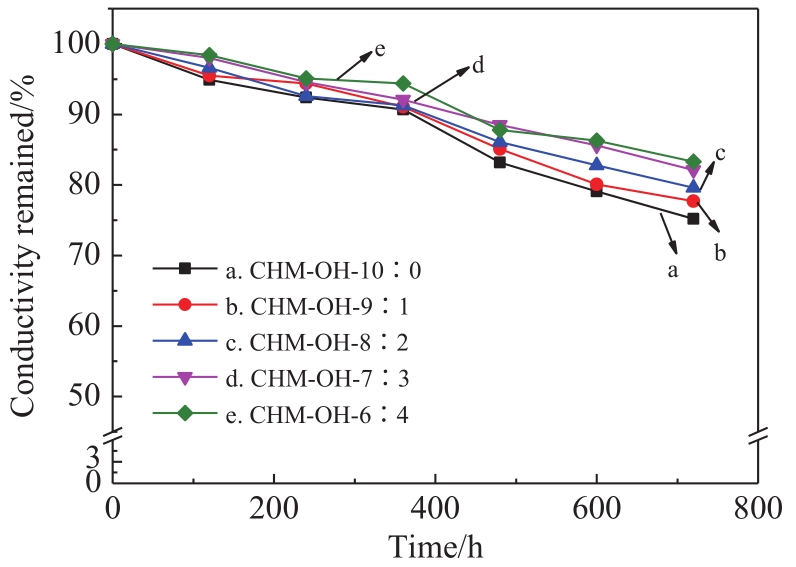| 1 |
GAO W T, GAO X L, GOU W W, et al. High-performance tetracyclic aromatic anion exchange membranes containing twisted binaphthyl for fuel cells[J]. J Membr Sci, 2022, 655: 120578.
|
| 2 |
WANG F H, CUI Y H, SANG J, et al. Cross-linked of poly(biphenyl pyridine) and poly(styrene-b-(ethylene-co-butylene)-b-styrene) grafted with double cations for anion exchange membrane[J]. Electrochim Acta, 2022, 405: 139770.
|
| 3 |
DU S H, LI S S, XIE N, et al. Development of rigid side-chain poly(ether sulfone)s based anion exchange membrane with multiple annular quaternary ammonium ion groups for fuel cells[J]. Polymer, 2022, 251: 124919.
|
| 4 |
DEKEL D R. Review of cell performance in anion exchange membrane fuel cells[J]. J Power Sources, 2018, 375: 158-169.
|
| 5 |
TREICHEL M, GAITOR J C, BIRCH C, et al. Anion-exchange membranes derived from main group and metal-based cations[J]. Polymer, 2022, 249: 124811.
|
| 6 |
LIN C X, CHENG W X, MIAO X X, et al. Clustered piperidinium-functionalized poly(terphenylene) anion exchange membranes with well-developed conductive nanochannels[J]. J Colloid Interface Sci, 2022, 608(2): 1247-1256.
|
| 7 |
MUHAMMAD IMRAN K, JAVIER F G, ZHU Q L. Fabrication of doubly charged anion-exchange membranes for enhancing hydroxide conductivity[J]. Sep Sci Technol, 2021, 56(9): 1589-1600.
|
| 8 |
XU F, SU Y, LIN B C. Progress of alkaline anion exchange membranes for fuel cells: the effects of micro-phase separation[J]. Front Mater, 2020, 7(4): 1-7.
|
| 9 |
SAMSUDIN A M, HACKER V. Effect of Crosslinking on the properties of QPVA/PDDA anion exchange membranes for fuel cells application[J]. J Electrochem Soc, 2021, 168(4): 044526.
|
| 10 |
PECKHAM T J, HOLDCROFT S. Structure-morphology-property relationships of non-perfluorinated proton-conducting membranes[J]. Adv Mater, 2010, 22(42): 4667-4690.
|
| 11 |
WANG X Z, CHEN W T, LI T T, et al. Ultra-thin quaternized polybenzimidazole anion exchange membranes with throughout OH- conducive highway networks for high performance fuel cell[J]. J Mater Chem A, 2021, 9: 7522-7530.
|
| 12 |
ZHOU R T, REN Y Z, GONG S T, et al. Complementary side chain promotes microphase separation in the membranes for alkali fuel cells[J]. Polymer, 2022, 238: 124403.
|
| 13 |
YOU X Q, CHEN J Q, PAN S, et al. Piperazine-functionalized porous anion exchange membranes for efficient acid recovery by diffusion dialysis[J]. J Membr Sci, 2022, 654: 120560.
|
| 14 |
YANG J B, DAI G K, WANG J, et al. Porous anion exchange membrane for effective acid recovery by diffusion dialysis[J]. Processes, 2021, 9(6): 1049-1058.
|
| 15 |
ZHANG G X, LI R Y, WANG X, et al. The inhibiting water uptake mechanism of main-chain type N-spirocyclic quaternary ammonium ionene blended with polybenzimidazole as anion exchange membrane[J]. Sep Purif Technol, 2022, 291: 120950.
|
| 16 |
GUO M L, BAN T, WANG Y J, et al. Exploring highly soluble ether-free polybenzimidazole as anion exchange membranes with long term durability[J]. J Membr Sci, 2022, 647: 120299.
|
| 17 |
CHU X M, MIAO S S, ZHOU A D, et al. A strategy to design quaternized poly(2,6-dimethyl-1,4-phenylene oxide) anion exchange membranes by atom transfer radical coupling[J]. J Membr Sci, 2022, 649: 120397.
|
| 18 |
KYUNGWHAN M, JIEON C, YERIM L, et al. Crosslinked poly(m-terphenyl N-methyl piperidinium)-SEBS membranes with aryl-ether free and kinked backbones as highly stable and conductive anion exchange membranes[J]. J Membr Sci, 2022, 653: 120487.
|
| 19 |
ZHANG P J, SHEN B, PU H T. Robust, dimensional stable, and self-healable anion exchange membranes via quadruple hydrogen bonds[J]. Polymer, 2022, 245: 124698.
|
| 20 |
SANG J, YANG L C, LI Z M, et al. Comb-shaped SEBS-based anion exchange membranes with obvious microphase separation morphology-science direct[J]. Electrochim Acta, 2022, 403: 139500.
|
| 21 |
YU N, DONG J H, LI H H, et al. Improving the performance of quaternized SEBS based anion exchange membranes by adjusting the functional group and side chain structure[J]. Eur Polym J, 2021, 154: 110528.
|
| 22 |
SHI Y, MENG F Z, ZHAO Z F, et al. Hybrid anion exchange membranes with adjustable ion transport channels designed by compounding SEBS and homo-polystyrene[J]. J Appl Polym Sci, 2021, 138(23): 50540.
|
| 23 |
MOHANTY A D, RYU C Y, KIM Y S, et al. Stable elastomeric anion exchange membranes based on quaternary ammonium-tethered polystyrene-b-poly(ethylene-co-butylene)-b-polystyrene triblock copolymers[J]. Macromolecules, 2015, 48(19): 7085-7095.
|
| 24 |
ZHANG S, ZHU X L, JIN C H, et al. Pyridinium-functionalized crosslinked anion exchange membrane based on multication side chain tethered elastomeric triblock poly(styrene-b-(ethylene-co-butylene)-b-styrene) [J]. React Funct Polym, 2019, 138: 62-69.
|
| 25 |
JEON J Y, PARK S, HAN J, et al. Synthesis of aromatic anion exchange membranes by Friedel-Crafts bromoalkylation and cross-linking of polystyrene block copolymers[J]. Macromolecules, 2019, 52(5): 2139-2147.
|
| 26 |
MUNSUR A Z A, HOSSAIN I, NAM S Y, et al. Quaternary ammonium-functionalized hexyl bis(quaternary ammonium)- mediated partially crosslinked SEBSs as highly conductive and stable anion exchange membranes[J]. Int J Hydrogen Energy, 2020, 45(31): 15658-15671.
|
| 27 |
LI Z M, LI C H, LONG C, et al. Elastic and durable multi-cation-crosslinked anion exchange membrane based on poly(styrene-b-(ethylene-co-butylene)-b-styrene) [J]. J Polym Sci, 2020, 58(16): 2181-2196.
|
| 28 |
SUNG S, CHAE J E, MIN K, et al. Preparation of crosslinker-free anion exchange membranes with excellent physicochemical and electrochemical properties based on crosslinked PPO-SEBS[J]. J Mater Chem A, 2021, 9(2): 1062-1079.
|
| 29 |
FRANCESCO P, EMANUELE C, ELISA P, et al. Blends of SBS triblock copolymer with poly(2,6-dimethyl-1,4-phenylene oxide)/polystyrene mixture[J]. J Appl Polym Sci, 2003, 88(11): 2698-2705.
|
| 30 |
LIN F, WU C J, CUI D M. Synthesis and characterization of crystalline styrene-b-(ethylene-co-butylene)-b-styrene triblock copolymers[J]. J Polym Sci Part A Polym Chem, 2017, 55(7): 1243-1249.
|
| 31 |
LIU F S, WAHID U, ZHAO Z F, et al. Design, synthesis and characterization of SEBS anion exchange membranes with ultrahigh dimensional stability[J]. J Polym Res, 2022, 29: 343.
|
| 32 |
BAETZOLD J P, KOBERSTEIN J T. Effects of end-block associating homopolymers on the thermomechanical properties and phase behavior of a triblock copolymer[J]. Macromolecules, 2001, 34(26): 8986-8994.
|
| 33 |
PAN Z F, AN L, ZHAO T S, et al. Advances and challenges in alkaline anion exchange membrane fuel cells[J]. Prog Energy Combust Sci, 2018, 66: 141-175.
|
| 34 |
WANG Z Y, JAVIER P, VIJAY R, et al. Polystyrene-block-poly(ethylene-ran-butylene)-block-polystyrene triblock copolymer separators for a vanadium-cerium redox flow battery[J]. J Electrochem Soc, 2017, 164(4): 372-378.
|
| 35 |
HAO J K, GAO X Q, JIANG Y Y, et al. Crosslinked high-performance anion exchange membranes based on poly(styrene-b-(ethylene-co-butylene)-b-styrene)[J]. J Membr Sci, 2018, 551: 66-75.
|
| 36 |
LI Z, HE X Y, JIANG Z Y, et al. Enhancing hydroxide conductivity and stability of anion exchange membrane by blending quaternary ammonium functionalized polymers[J]. Electrochim Acta, 2017, 240: 486-494.
|
| 37 |
WANG Z Y, JAVIER P, VIJAY R. Anion exchange membranes based on polystyrene-block-poly(ethylene-ran-butylene)-block-polystyrene triblock copolymers: cation stability and fuel cell performance[J]. J Electrochem Soc, 2017, 164(12): 1216-1225.
|
| 38 |
WANG F H, LI C H, SANG J, et al. Synthesis and characterization of a long side-chain double-cation crosslinked anion-exchange membrane based on poly(styrene-b-(ethylene-co-butylene)-b-styrene)[J]. Int J Hydrogen Energy, 2021, 46(73): 36301-36313.
|
| 39 |
ZHANG P J, SHEN B, PU H T. Robust, dimensional stable, and self-healable anion exchange membranes via quadruple hydrogen bonds[J]. Polymer, 2022, 245: 124698.
|
| 40 |
NOH S, JEON J Y, ADHIKARI S, et al. Molecular engineering of hydroxide conducting polymers for anion exchange membranes in electrochemical energy conversion technology[J]. Acc Chem Res, 2019, 52(9): 2745-2755.
|
| 41 |
SANG J, YANG L C, WANG F H, et al. SEBS-based anion exchange membrane grafted with N-spirocyclic quaternary ammonium cations for fuel cells[J]. ACS Appl Energy Mater, 2022, 5(10): 12347-12358.
|
| 42 |
THOMANN Y, THOMANN R, HASENHINDL A, et al. Gradient interfaces in SBS and SBS/PS blends and their influence on morphology development and material properties[J]. Macromolecules, 2009, 42(15): 5684-5699.
|
| 43 |
XU L X, MA J L, CHEN D, et al. Brush-like gold nanowires-anchored g-C3N4 nanosheets with tunable geometry for ultrasensitive and regenerative SERS detection of gaseous molecules[J]. Spectrochim Acta Part A, 2022, 283: 121732.
|
| 44 |
HAN J J, LIU C F, DENG C W, et al. Mechanically robust and highly conductive semi-interpenetrating network anion exchange membranes for fuel cell applications[J]. J Power Sources, 2022, 548: 232097.
|

 ), Yi-Ming LIANG, Jian-En HUANG, Chun-Qing ZHANG(
), Yi-Ming LIANG, Jian-En HUANG, Chun-Qing ZHANG( )
)


